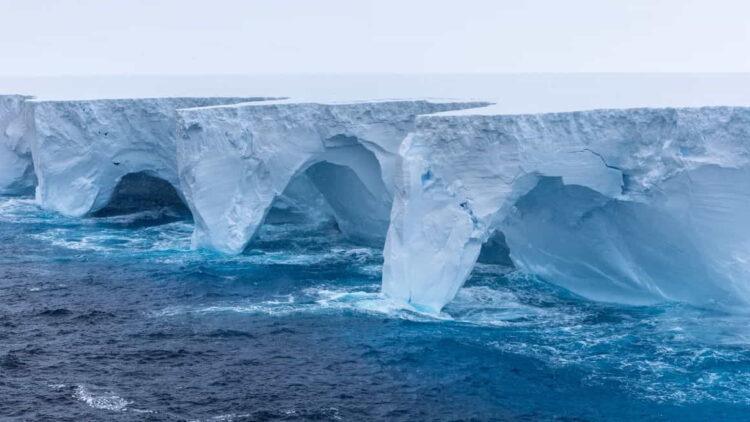World’s Largest Iceberg, A23a, Breaks Free and Drifts Again
The world’s largest iceberg, A23a, is finally on the move after months of being stuck in place, scientists from the British Antarctic Survey (BAS) have confirmed.
A Colossal Iceberg on the Move
Spanning an impressive 3,672 square kilometers (1,418 square miles) – an area slightly larger than Rhode Island – A23a has been a subject of scientific observation since it calved from the Filchner-Ronne Ice Shelf back in 1986.
For more than 30 years, the iceberg remained grounded on the floor of Antarctica’s Weddell Sea, likely anchored by its massive weight and size. Over time, erosion reduced its mass just enough to loosen its grip on the seabed.
After breaking free, the iceberg began drifting, carried by ocean currents until it became trapped once more. This time, it was held in place by a phenomenon called a Taylor column – a spinning vortex of water caused when ocean currents hit an underwater mountain.
Now, A23a has once again broken free. Scientists anticipate it will continue its journey through the Southern Ocean toward warmer waters and the remote island of South Georgia. There, it is likely to break apart and eventually melt.
The Lifecycle of a Giant
A23a has held the title of the largest iceberg several times since the 1980s. Other massive but shorter-lived icebergs – such as A68 in 2017 and A76 in 2021 – occasionally surpassed it. Unlike those icebergs, A23a has endured for decades, providing scientists with a unique opportunity to study its movement and impact on the environment.
Impact on the Environment
While A23a likely broke away as part of the ice shelf’s natural growth cycle and does not contribute to rising sea levels, scientists emphasize that climate change is still driving alarming changes in Antarctica. These changes could lead to significant global sea level rise, posing a threat to coastal regions worldwide.
Throughout its decades-long journey, A23a has provided critical insights into ocean ecosystems and the role of icebergs in global ocean health.
“We know that these giant icebergs can provide nutrients to the waters they pass through, creating thriving ecosystems in otherwise less productive areas,” said Laura Taylor, a biogeochemist from BAS who has studied the iceberg’s surrounding waters.
Unanswered Questions and Research
Despite this knowledge, questions remain about the specific impact of individual icebergs like A23a. Scientists are still investigating how the size, scale, and origin of icebergs influence their ability to distribute nutrients and impact carbon cycles in the ocean.
To address these questions, researchers have collected samples from ocean surface waters surrounding the iceberg – including areas directly behind, alongside, and ahead of its path. These samples will help scientists determine:
- What kind of life forms might emerge around A23a’s nutrient-rich waters.
- How the iceberg’s journey impacts the carbon balance between the ocean and the atmosphere.
Looking Ahead
As A23a drifts toward warmer waters, scientists will closely monitor its progress, studying its eventual breakup and disappearance. The iceberg’s journey offers a rare glimpse into the interconnectedness of ice, ocean ecosystems, and the global climate.
The story of A23a is not just about a massive chunk of ice drifting through the ocean; it’s a reminder of how fragile and dynamic Earth’s polar environments are in the face of climate change.
This article was rewritten by JournosNews.com based on verified reporting from trusted sources. The content has been independently reviewed, fact-checked, and edited for accuracy, tone, and global readability in accordance with Google News standards.
Stay informed with JournosNews.com — your trusted source for verified global reporting and in-depth analysis. Follow us on Google News and BlueSky for real-time updates.
JournosNews.com follows Google News content standards with original reporting, verified sources, and global accessibility. Articles are fact-checked and edited for accuracy and neutrality.












